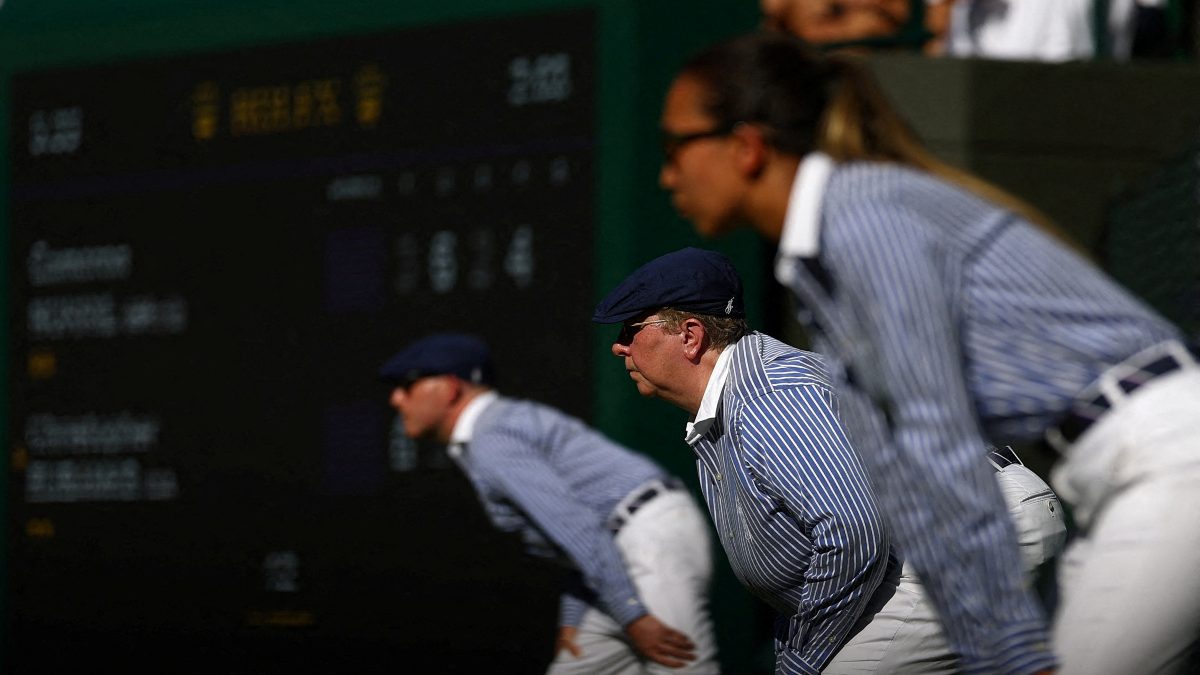If the sight of striped shirt-wearing line judges is something you associate with the prestigious Wimbledon tennis tournament, you might be disappointed to learn that they will no longer be seen on the court next season. The 147-year-old Wimbledon, the only Grand Slam played on grass at the All England Lawn Tennis & Croquet Club, announced on Wednesday that, starting in 2025, line judges will be replaced by electronic line-calling (ELC) technology.
While the tournament has undergone numerous changes over the years, this may be one of the most striking as the line judges were always visible when the camera focussed on the action.
“The officiating technology will be in place for all Championships and qualifying match courts and cover the ‘out’ and ‘fault’ calls that have previously been made by line umpires,” All England Club said in a statement.
Wimbledon latest to opt for electronic line-calling
Tournament chiefs said the decision to use ELC, which builds on existing ball-tracking and line-calling technology, was made following extensive testing during this year’s Championships.
Since 2007, Hawk-Eye has assisted the officials at Wimbledon on certain courts, with players able to challenge line calls.
“The decision to introduce live electronic line calling at the Championships was made following a significant period of consideration and consultation,” said All England Club chief executive Sally Bolton.
“Having reviewed the results of the testing undertaken at the Championships this year, we consider the technology to be sufficiently robust and the time is right to take this important step in seeking maximum accuracy in our officiating.
“For the players, it will offer them the same conditions they have played under at a number of other events on tour.
Officiating community under threat
Wimbledon is not the only one moving towards electronic line-calling, which will be used in all ATP Tour events from 2025. The ATP feels it will “optimise accuracy and consistency across tournaments” and the WTA is also moving in the same direction.
The Australian Open and US Open are already using electronic line-calling, with the French Open being the only exception at the moment.
The latest development raises significant questions about the future of line judges, as the ATP, WTA, and Grand Slam tournaments begin to consider them surplus to requirements.
The All England club paid a tribute to line judges in their statement but fell short of giving any assurance for a better future.
“We take our responsibility to balance tradition and innovation at Wimbledon very seriously. Line umpires have played a central role in our officiating set-up at the Championships for many decades and we recognise their valuable contribution and thank them for their commitment and service,” CEO Bolton said.
The line judges losing their jobs also puts pressure on tennis’ ability to produce capable chair umpires in the future. Most chair umpires start their careers as line judges.
As per a report, around 300 line judges are set to lose their jobs, while Wimbledon’s decision will also impact part-time opportunities for trained officials.
The Lawn Tennis Association, which is the national governing body of tennis in Great Britain, says it will work towards creating a system that will allow the existing officials to be retained within tennis, new officials are hired and the officiating community is supported.
“We understand the reasons behind the decision to introduce live electronic line-calling and we recognise the ongoing changes to officiating around the world,” said the LTA in a statement.
“With this in mind we are already working with the Association of British Tennis Officials to understand the impact on the pathway for British officials, and develop a new joint strategy with them that will ensure officials can be retained within the sport, new officials can be recruited and the officiating community will be supported through the changes.”
However, in a rapidly evolving sports ecosystem where technology increasingly replaces human intervention, it’s hard to envision how the LTA can implement a system that supports the officiating community without attracting criticism or causing issues.
With agency inputs
)